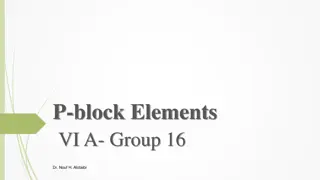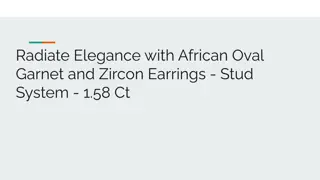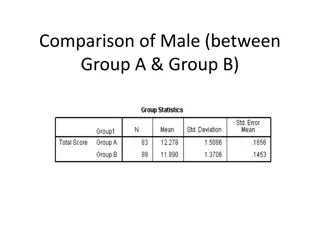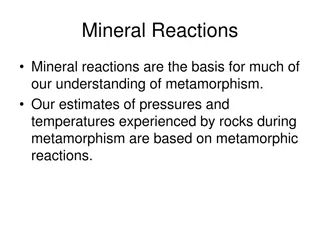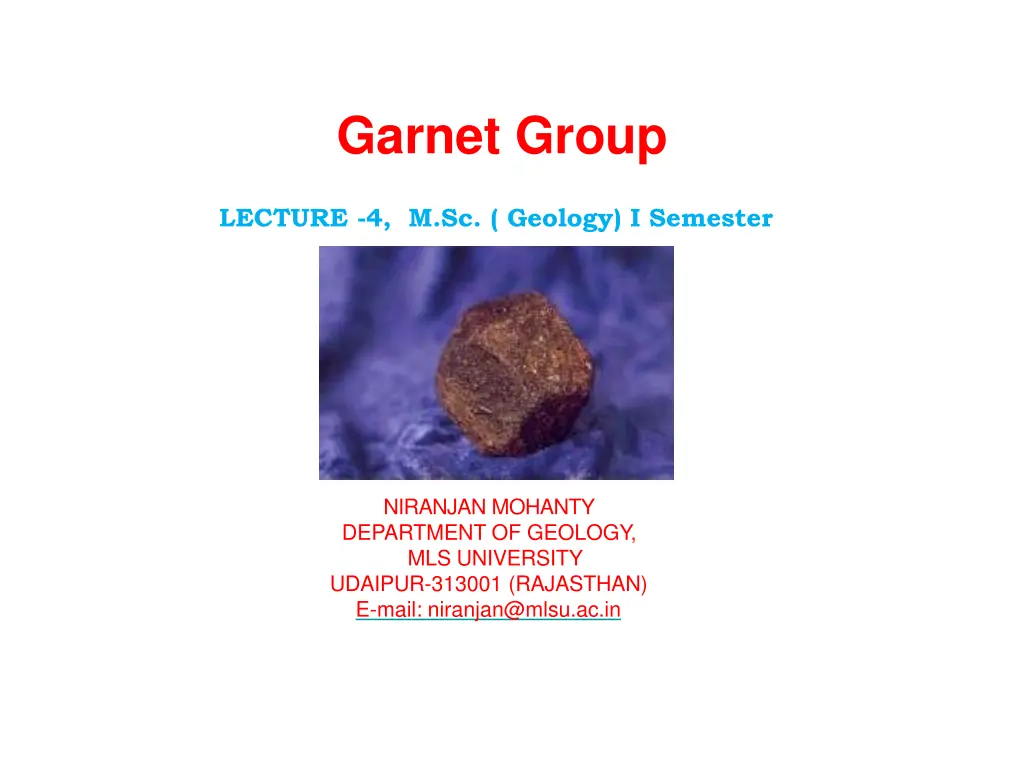
Exploring the Fascinating World of Garnet Group in Geology
Discover the diverse minerals within the garnet group, their structural composition, and the unique variations among different series like Pyralspite and Ugrandite. Explore the chemical compositions, solid solutions, and rare series that characterize these valuable gemstones in the field of geology.
Download Presentation

Please find below an Image/Link to download the presentation.
The content on the website is provided AS IS for your information and personal use only. It may not be sold, licensed, or shared on other websites without obtaining consent from the author. If you encounter any issues during the download, it is possible that the publisher has removed the file from their server.
You are allowed to download the files provided on this website for personal or commercial use, subject to the condition that they are used lawfully. All files are the property of their respective owners.
The content on the website is provided AS IS for your information and personal use only. It may not be sold, licensed, or shared on other websites without obtaining consent from the author.
E N D
Presentation Transcript
Garnet Group LECTURE -4, M.Sc. ( Geology) I Semester NIRANJAN MOHANTY DEPARTMENT OF GEOLOGY, MLS UNIVERSITY UDAIPUR-313001 (RAJASTHAN) E-mail: niranjan@mlsu.ac.in
Garnet Family Minerals of garnet group includes a number of varieties which crystallizein isometric system. They belong to Neso silicate group of silicates. General General Formula Formula X+23 Y+3 2Z+43O12 Where, X+2 = Ca, Mg, Fe and Mn (dodecahedral site) Y+3 = Fe, Al, Cr (octahedralsite) Z+4 = Si, Ti (tetrahedralsite) PYRALSPITE SERIES (aluminium garnets) 2(SiO4)3] Pyrope Pyrope magnesium-aluminium garnet [Mg+23Al+3 Almandine Almandine Iron-aluminium garnet [Fe+23Al+32(SiO4)3] Spessartine Spessartine or or spessartite spessartite manganese- aluminium garnet [Mn+23Al+32(SiO4)3] UGRANDITE SERIES (calciumgarnets) Uvaravite Uvaravite calcium-chromiumgarnet [Ca+23 Cr+3 2 (SiO4)3] Grossular calcium-aluminium garnet [Ca+23 Al+3 2 (SiO4)3] Andradite garnet [Ca+23 Fe+3 2(SiO4)3] Grossular Andradite calcium-iron
Structure Silicon-oxygen tetrahedra exist as independent groups and the structure consists of alternating ZO4 tetrahedra and YO6 octahedra which share corners to form a three-dimensional frame-work. Within this there are cavities that can be described as distorted cubes or triangular dodecahedra of eight oxygens which contain X ions. Tightly packed structure accounts for high density and specific gravity of garnets. Structure
Garnet has a generalised structural formula of A3B2Si3O12 A = Mg ,Fe2+, Mn or Ca (pyrope, almandine, spessartine and grossular). B = Al, Cr, or (Fe3+ Ti). (The latter two give uvarovite andandradite). The A site is 8 coordinated, the Y site is 6 coordinated (octahedral) and inated(tetrahedral) the T site is4 coord Isolated (SiO4)4 tetrahedra are linked to distorted octahedrons (theB site). And, to distorted dodecahedrons (theA site).
Chemistry Continuous compositional variation occurs in individual series but not amongst two series. Each member represent end member of isomorphous series. A garnet with corresponding composition to an end member is rare and the name is given to most dominant molecule. The reason there is no solid solution between the "pyralspite" and "ugrandite" systems is because of the ionic radii differences between Ca and (Mg2+, Fe2+or Mn2+). Grossular commonly contains water due to substitution of OH . Hence, there is a complete solid solution between grossular & hydrogrossular ( a water rich variety). Rare series is known between pyrope-knorringite (Cr variety) Rare series is also known between grossular-uvaravite- schorlomite (Ca,Fe, Ti-garnet)
Physical Physical Properties Properties System: Cubic Form: Rhombdodecahedron or trapezohedron Colour: Pyrope (lilac/deep cromson/mulberry); almandine (deep red); andradite (brownish green); uvarovite (emerald green); spessartine (brownish red); grossular (olive-green) Lustre: Vitreous Fracture: sub-conchoidal or uneven Streak: whitish or white Hardness: 6-7.5 Sp.Gravity: 3.42-4.27
Paragenesis andComposition Pure end member compositions of garnet are rare. The majority are some intermediate composition, which is determined by a combination of factors. P (>15-25 kbar,1000 C) Ca increase. Fe3Al2Si3O12 +KMg3AlSi3O10(OH)2 350 Mn cores Pressure Mg3Al2Si3O12 +KFe3AlSi3O10(OH)2 T Mg for Fe exchange in pelites This reaction is a classic thermometer. Exchange between Mg, Fe, Ca and Mn is favourable because of similarities in ionic radii and same charge. Temperature
Paragenesis Garnet is found in metamorphic rocks (mostly), igneous rocks & also in sedimentary rocks (resistant to abrasion & chemical attacks). Pyrope occurs in ultramafic rocks such as peridotites (garnet- peridotite. Almandine commonest of all garnets. In rocks of granulite facies, garnet is typically almandine. Pegmatites, granites, rhyolites. Spessartine commonest garnet in granitic pegmatites. Grossular & Andradite - Thermally & regionally metamorphosed impure calcareous rocks.
Industrial and EconomicImportance All species, except uvarovite are cut asgemstones. The most valuable are green andradite from the Urals and almandine from Gore Mountain The subconchoidal fracture and angular fracture, coupled with the high hardness, also make garnet a valuable abrasive.












